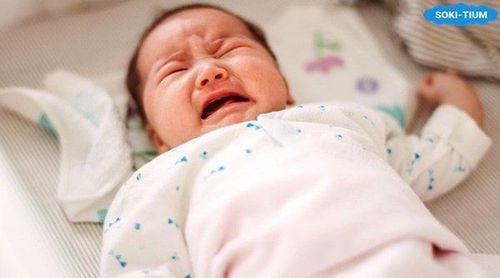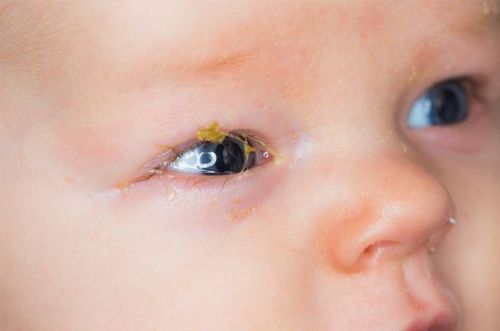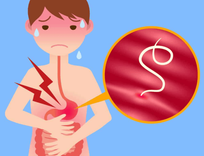The article is expertly consulted by Th.S BS. Dang Thi Ngoan – Doctor of Pediatrics - Neonatology - Vinmec Ha Long International General Hospital
It is expected that within the first few weeks of life, the baby will cry without tears. Over time, your child's eyes will become more moist and eventually begin to produce tears. Contact your pediatrician if your baby has excessive tearing that you think may be due to an infection or other medical condition, or if he or she is not producing tears after 3 months of age.
1. Is It Normal for Babies to Cry Without Tears?
During the first two weeks of life, it’s normal for babies to cry without visible tears. During this time, their eyes remain relatively dry, even when they cry. While newborns might produce a small amount of tears, it’s usually not enough to form crying tears.
Aside from the absence of tears, you may also notice the following about your baby's eyes:
- Occasionally crossing or diverging for brief periods.
- Redness or bloodshot appearance (subconjunctival hemorrhage caused by broken blood vessels during birth).
- Lack of defined color.
- Temporary swelling of the eyelids.
Around two weeks old, the baby's tear glands will begin to increase tear production, although you might still not notice significant changes.
Typically, between 1 to 3 months of age, babies start producing more visible tears when crying, creating the tear droplets that you can see.

2. Is It Normal for Some Newborns to Cry with Tears Right Away?
It is rare for newborns to cry with tears before their tear glands have fully developed. However, if your baby is at least two weeks old and starts crying with visible tears, they may have just reached the "real crying" stage in their development.
However,, Parents should know that newborn tearing can also be caused by:
Blocked Tear Ducts
If your baby’s eyes frequently tear up even when they are not crying, it might be due to a blocked tear duct.
When tear ducts are blocked, tears back up and overflow into the eyes, making it seem like the baby is constantly tearing up.
This condition is usually not a cause for concern, as most cases resolve on their own by the baby’s first birthday.
Infections
Sometimes, a blocked tear duct can become infected, leading to a condition called dacryocystitis.
This can be serious in newborns and requires treatment. If your baby’s eyes are also swollen, red, or producing pus, you should take them to a healthcare facility promptly for appropriate care.
Viruses and Bacteria
Newborns can develop infections from viruses, such as the common cold, or bacterial conditions, like pink eye (conjunctivitis).
This is particularly likely if the tears are accompanied by redness or discharge. While pink eye is uncommon in newborns, it can lead to severe issues. Seek immediate medical attention if your baby has pink eye with discharge.

Baby Crying with Tears from Only One Eye
This is most likely caused by a blocked tear duct or pink eye. (Tearing in both eyes is more typical of colds or viral infections.)
The difference between these two conditions is: blocked tear ducts cause tearing but usually do not present with other symptoms, meanwhile pink eye is accompanied by mucus discharge and redness in the affected eye.
Reasons for a Baby Not Producing Tears
If your baby is a few months old and still does not produce visible tears while crying, this is often just a delay within the normal range. However, there could be an underlying medical cause for this delay, so it is advisable to consult a pediatrician.
If your baby previously cried with tears but has stopped, this could be a sign of dehydration. This condition is often accompanied by other symptoms such as: vomiting, diarrhea, or poor feeding.
To prevent dehydration, ensure your baby receives sufficient fluids (breast milk or formula) daily. Early signs of dehydration in infants include:
- Reduced number of wet diapers.
- Lethargy.
- Irritability.
- Reduced tear production when crying.
Severe Eye Conditions
You might think that a lack of tears could be a sign of more serious eye conditions, such as cataracts, lazy eye, glaucoma or retinoblastoma. In fact, there is no evidence linking dry eyes to these conditions.
These conditions have other distinct symptoms that a pediatrician will identify during an examination.

Familial dysautonomia is a rare genetic disorder that can cause a lack of tears, although it is not specifically an eye condition. . Other symptoms of this disorder include:
- Low muscle tone (hypotonia)
- Difficulty regulating body temperature
- Frequent lung infections
- Feeding difficulties
When to See a Doctor for Your Baby?
For very young infants, such as those under 1 month old, it is completely normal for them to cry without tears. However, you should contact a doctor for further guidance if your baby:
- Does not produce tears by 2 or 3 months of age.
- Has tears from only one eye, accompanied by signs of infection, such as redness, pus, abnormal discharge, or swelling.
- Displays any unusual eye characteristics, such as discolored pupils or cloudy lenses.
Please dial HOTLINE for more information or register for an appointment HERE. Download MyVinmec app to make appointments faster and to manage your bookings easily.








